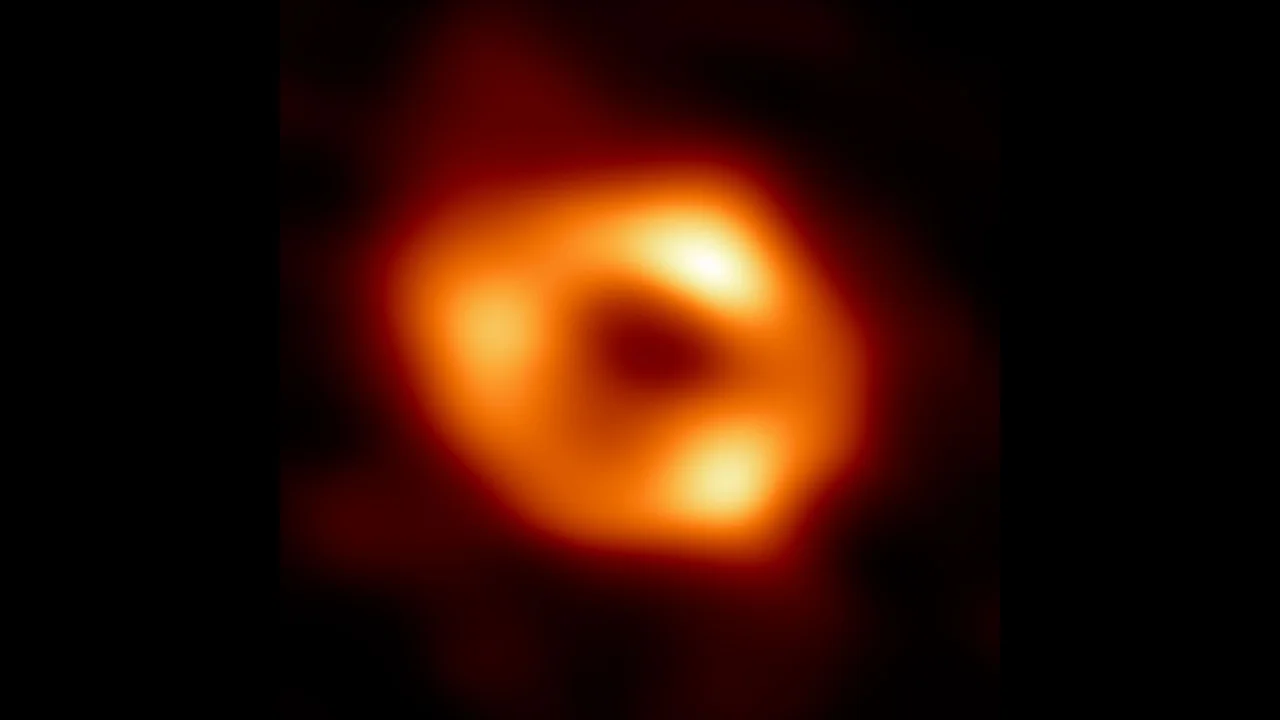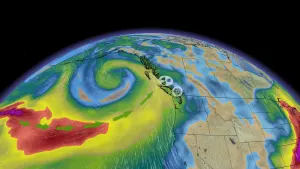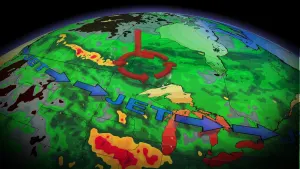
Here's our first real image of the Milky Way's supermassive black hole
This orange blob of light is the very first picture of Sagittarius A*, the black hole that lies at the core of our galaxy.
After years of waiting, astronomers have finally presented us with the first actual image of the Milky Way's supermassive black hole.
This article was originally published on May 12, 2022. It has been updated with the latest episode of Out of this World, embedded above.
At the heart of our galaxy lies a 'monster' black hole so large that it tips the cosmic scales at over 4 million times the mass of our Sun. Astronomers call it Sagittarius A* (pronounced sadge-eh-tare-ee-us ay-star) or Sgr A*. Until now, we have only had indirect evidence for the existence of this invisible object. We've seen its immense gravity tear apart gas clouds and sling whole groups of stars around it in an intricate gravitational dance. However, we have never actually seen it before.
Now, astronomers have released the first real picture of Sagittarius A*, thanks to a global network of eight radio telescopes called the Event Horizon Telescope (EHT).

This long-exposure image of our galaxy's supermassive black hole was captured by the Event Horizon Telescope. Credit: EHT Collaboration
Here, we see the ring of hot gases that circles around the black hole, known as the accretion disk. The black hole itself, which is invisible because it emits no light, is located within the shadowy centre of the disk.
This image of Sagittarius A* is blurry, but for a very good reason.
During each observation of the black hole, EHT telescopes had to stare at it over the course of several hours, taking in all of the light they could over that time. Then, all that collected light was put together to produce something we can see as an image. However, the matter in the accretion disk swirls around the black hole very quickly, taking just minutes to orbit it.
It's like taking a long-exposure image of our night sky and seeing how it turns the pinpoints of starlight into long curving trails. Or even just taking a typical picture of a pet or a small child running around the yard. The movements of the target cause the fine details to be blurred together.
It took computer simulations of the disk, based on the observations, to provide us with a look at what the accretion disk probably looks like as it orbits the black hole from moment to moment.

These simulations, presented during the National Science Foundation announcement of the results, show what Sgr A-star's accretion disk probably looks like in real-time. Credit: EHT Collaboration/NSF
"We were stunned by how well the size of the ring agreed with predictions from Einstein's Theory of General Relativity," EHT Project Scientist Geoffrey Bower said in a press release on Thursday. "These unprecedented observations have greatly improved our understanding of what happens at the very center of our galaxy and offer new insights on how these giant black holes interact with their surroundings."
It was a little over three years ago, on April 11, 2019, that the very first image of a black hole was released. In that case, it was the supermassive black hole at the core of a distant galaxy named Messier 87, or just M87.
Leading up to that announcement, astronomers were hopeful that they would have an image of Sagittarius A* as well. However, it was proving to be a much more challenging subject. This was due to the relative size of the two objects and the relative speed at which the two black holes are moving to us here on Earth.
M87's black hole is larger than our entire solar system, and due to being roughly 53 million light years away from us, it is nearly a fixed point in our night sky. Sgr A* is tiny by comparison, and as we circle the Sun and the Sun moves through the galaxy, it becomes a far less steady target to observe.

This artist's impression shows the size difference between the M87 black hole (left) and the Milky Way's black hole (right). Credit: National Science Foundation/Keyi "Onyx" Li
With images of both the M87 black hole and the black hole in the core of our galaxy, it is an exciting time for astronomers and astrophysicists.
"Now we can study the differences between these two supermassive black holes to gain valuable new clues about how this important process works," said EHT scientist Keiichi Asada. "We have images for two black holes — one at the large end and one at the small end of supermassive black holes in the Universe — so we can go a lot further in testing how gravity behaves in these extreme environments than ever before."
According to the National Science Foundation, this image is just our first look at Sgr A*. Going forward, upgrades to the individual telescopes of the EHT and adding even more observatories to the network are expected to allow astronomers to produce more detailed images. We may even see movies of these black holes at some point in the future.










